Support réglable pour le mollet et le menton
Login For Health Care Pricing
Typically Ships in 1-2 weeks
L'attelle réglable mollet/menton de Mueller Sports Medicine présente une conception enveloppante pour une application et un retrait faciles.
In what follows below, we shall briefly touch on the leading causes of lower leg pain and suggest the most likely treatment or prevention approach for each.
Most of these injuries are the result of sports or other physically demanding activities. So, if a medical consultation is needed for assistance with any of them, a healthcare professional with sports medicine expertise should be chosen.
In some cases, two or more different causes of lower leg pain may produce pains that are quite similar. Faced with this circumstance, doctors must perform differential diagnosis to determine which of the eligible conditions is actually the culprit.
Cramping of the lower leg muscles can take place at any time of the day or night. They are characterized by sudden tightness and pain in the calf area of the lower leg. These cramps usually happen after a period of intense exertion or sometimes in the middle of it.
The cause of leg cramps is often unknown. In those cases where a cause is identified, the aetiology can be very variable. Possible causes include electrolyte disturbances (for example low potassium levels) and certain drugs.
Leg cramps can be caused by tired or dehydrated muscles. To reduce the risk of their occurrence, be careful to stay hydrated before, during and after your period of physical exertion. Consuming a high quality source of potassium (such as bananas) during or after your activity will also help.
To help prevent the occurrence of cramping, you can take care to stretch properly before your activity. Massaging the calf area may also be helpful in avoiding this painful and unpleasant event.
This injury is also known as medial tibial stress syndrome and causes pain at (to) the front of the lower leg (unlike calf muscle cramps, which are felt at the rear of the leg). In its advanced stages, shin splints causes intense pain along the front edge of the shin bone (tibia), making it difficult to walk, run or jump.
Shin splints are most commonly caused by recurrent high impact activity (such as running or jumping) on hard surfaces, as often occurs with athletes and military recruits. This will usually result in shocks traveling up through your lower legs and causing the injury. Other possible contributors to shin splints include flat feet or pes planus and hyperpronation of the feet.
Shin splints normally responds positively to R.I.C.E. treatment. Rest, Icing, Compression and Elevation usually cause the pain to gradually reduce and then disappear. Refrain from high impact activity that will stress the lower leg and apply ice or a cold pack for periods of around 20 minutes, every 2-3 hours.
In addition to these steps, apply compression to the painful area with a tensor bandage or by wearing a calf compression sleeve. Keep your lower legs above heart level whenever possible, e.g. when lying or sitting down. This helps to limit and reduce swelling.
These home treatments can be supplemented by using pain relief with anti inflammatory medications such as aspirin and Ibuprofen or paracetamol.
To prevent a recurrence of this source of lower leg pain, try to avoid high impact activities on hard surfaces. Cross train by mixing in lower impact activities like swimming or cycling. Wearing shoes with greater cushioning can also help. Finally, try to avoid sudden increases in training intensity as these have been shown to bring on this problem.
To find out more about this cause of lower leg pain, including how to treat and prevent it, please read our post on shin splints.
If you have lower leg pain from this condition, you will experience pain at the bottom of your calf and just above the back of your heel.The pain may intensify when you are running, walking or performing activities like climbing stairs.
The Achilles tendon is a band of tissue that connects the three calf muscles (the gastrocnemius, soleus and the plantaris ) to the heel bone. Achilles tendonitis is the injury that results when this tendon becomes inflamed or irritated due to overwork. It is most commonly seen in people who participate frequently in activities like running and jumping. The condition is thought to occur when continued overload of the tendon leads to a failed healing response,which in turn results in degenerative changes in the tendon.
As with shin splints, the key to treatment of this source of lower leg pain is rest for the Achilles tendon. Refrain from physically demanding activities, especially running, jumping and other high impact activities for a while. Apply ice or a cold compress to the painful area. Keep it elevated above heart level as much as possible.Pain relief and anti inflammatory medications will also be helpful.
Stretching and strengthening exercises can be helpful once the acute stage of the injury has passed. If there is no improvement after 7-10 days of rest and gentle stretching, (Alfredson’s) eccentric heel-drop exercises are a good treatment for Achilles tendinitis. These exercises need to be done regularly for up to three months or even longer.
There is only limited evidence to support the routine use of steroid injections for the treatment of Achilles tendinopathy. Their use is associated with scar tissue formation and an increased incidence of tendon rupture.
Physical therapy exercises to stretch and strengthen the calf muscles will be helpful in preventing a recurrence of this injury. As stated, the Achilles tendon connects these muscles to the heel bone. The stronger and more supple these muscles are, the lower will be the pressure on the Achilles tendon due to physical activity.
In some cases, your lower leg pain in the area of the Achilles tendon may be unusually severe. This may indicate that the tendon is torn. A possible indicator of this may be trouble pointing your toes to the ground.
If your doctor determines that you have torn your Achilles tendon, rest will likely not be adequate. Instead, the injury may have to be corrected by surgery.
You can read more about the causes, symptoms and treatment of this cause of lower leg pain here.
These injuries are normally indicated by a popping or snapping sound or sensation in the calf area at the time of injury occurrence. They are caused by overstretching or putting excess force through the calf muscles at the back of the lower leg. The pain will continue but be accompanied by contusions, and discoloration in the calf area.
Unlike muscle cramps, which tend to come and go within a few minutes, calf strains or sprains tend to cause ongoing lower leg pain.
These injuries are in almost all cases treatable using the R.I.C.E. strategy. Compression using elasticated bandages can help to reduce swelling.Try to keep your weight off the injured calf as much as possible. Consider using crutches to do this if the pain is especially severe.
Pain relief and/or anti inflammatories are also treatment options. Be careful to discuss side effects with your doctors before you start taking these medications, however.
A graduated physiotherapy rehabilitation programme is often a significant part of treatment.
The recovery time from this injury can be anywhere from two to six weeks.
To learn more about this cause of lower leg pain, please consult our posts on calf strains and sprains.
This is a relatively common lower leg injury among those who lead active lifestyles. It tends to affect people like army recruits, runners and ballet dancers. The lower leg pain that it causes tends to be sharp and highly localized to the front of the leg. Usually, it increases with activity and diminishes while the patient is at rest.
Stress fractures tend to be overuse injuries. They usually occur when the muscles around the shin bone become fatigued from repetitive use and eventually transfer the stress onto the tibia or shin bone. That stress eventually leads to small fractures in the shinbone.
Doctors usually diagnose these fractures using an X Ray or CT scan. Very small fractures may require an MRI for proper visualization.
The main treatment for this cause of lower leg pain is a 6-8 week period of rest. This is followed by a gradual return to the activity. In addition, patients can control the pain using ice/cold compress as well as drugs like Tylenol (paracetamol).
Unlike the other causes of lower leg pain discussed above, this is a potentially life threatening condition. It is caused by the formation of a blood clot in a lower leg blood vessel such as a vein. If the clot then breaks off and reaches the lungs, it can result in a very serious health condition.
It is estimated that a high proportion of people with DVT are asymptomatic (up to 80%). It is often only observed in association with certain predisposing factors. These predisposing factors include a previous history of DVT, age over 60 years, surgery, obesity, prolonged travel, acute medical illness, cancer, immobility, thrombophilia (increased tendency of the blood to clot) and pregnancy.
The lower leg pain that this injury causes is somewhat similar to that of muscle cramping (discussed above). Individuals with deep vein thrombosis (DVT) may also experience warmth and swelling of the calves as well as redness.
Doctors usually diagnose this condition using an ultrasound scan.
Doctors normally treat DVT using blood thinning medications, or anticoagulants.
They prevent the clots from getting larger and will also inhibit the formation of new clots.
Treatment usually needs to be initiated in hospital, either with subcutaneous heparin followed by an oral blood-thinning drug or with an oral preparation from the outset. Once treatment has been started for a proven DVT, treatment usually needs to be continued for a minimum of three to six months.
This condition causes an aching, heavy feeling or cramping lower leg pain. Affected individuals may also experience swollen lower legs and ankles, varicose veins, other skin discolorations, skin rashes, recurrent skin infections and chronic ulcers.
The underlying cause of CVI is the inability of the veins in the lower leg to transport blood back to the heart. This in turn is usually the result of malfunctioning valves that reduce blood flow through the vein. Instead of flowing back to the heart, the blood collects in the lower legs and causes increased intra venous pressure.
The malfunctioning of the valves is often caused by an increase in pressure within the veins. This pressure increase in the veins can happen for a number of reasons. These include a clot inside a vein, leg injury or surgery, excess weight as well as long periods of standing or sitting.
Treatment of CVI usually involves elevating the lower leg and allowing gravity to force the blood back through the veins to the heart. Graduated compression stockings may also be worn to force the blood back to the heart. Exercises involving pointing the feet up and down (movement from the ankle) as well as repeatedly lifting the heels off the floor to stand on tiptoe can, also, help to move blood from the legs back to the heart. People with more severe symptoms, such as venous ulcers, often need treatment with compression bandages.
This condition is caused by compression or other damage to nerves carrying sensations from the spine to the lower leg. The symptoms include pain of a tingling, electric or shock like nature in the lower back, buttocks and along the leg. Numbness and weakness in the lower leg may also be experienced.
This cause of lower leg pain can be the result of a herniated disk. This is when damage to one or more discs of the spine causes compression of adjacent nerves. Spinal stenosis (narrowing of the spinal canal and compression of the spinal cord it contains) is another potential cause. It (spinal stenosis) typically causes pain and numbness in the legs which improves when the patient leans forward. A rarer cause can be an infection or tumor in or close to the spine.
To treat this cause of lower leg pain, doctors may use a combination of pain relief medications, muscle relaxants and physical therapy. Epidural spinal injections may also be considered. Patients may also be advised to pursue activity modifications to reduce the pain they are experiencing.
In cases of severe and persistent lower leg pain, doctors may suggest surgery to correct the problems contributing to the pain.
Herniated disc and spinal stenosis conditions sometimes require surgery to improve the symptoms they cause.

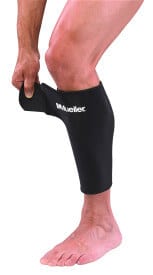
Login For Health Care Pricing
Typically Ships in 1-2 weeks
L'attelle réglable mollet/menton de Mueller Sports Medicine présente une conception enveloppante pour une application et un retrait faciles.
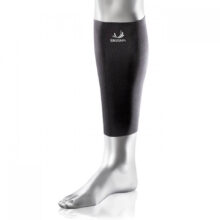
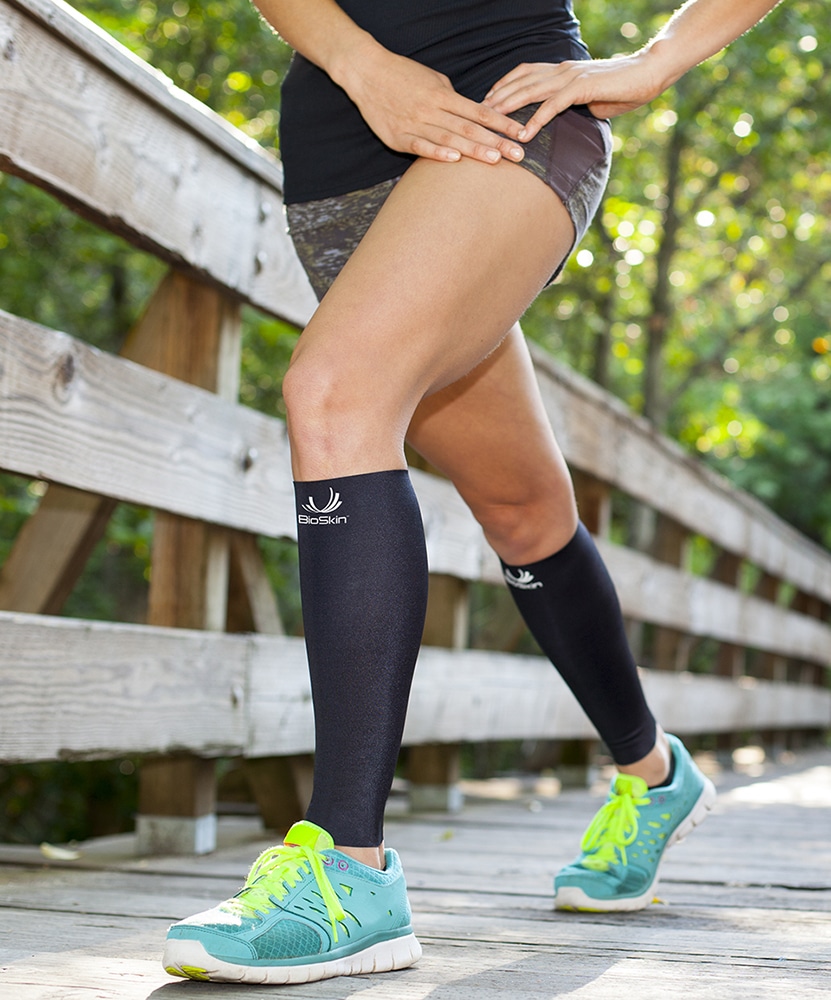
Login For Health Care Pricing
En stock
La peau de mollet Bio Skin offre une compression optimale pour soulager la douleur des mollets ou des tibias blessés. La matière fine et respirante permet à la transpiration de s'évaporer pour vous garder au frais. La caractéristique unique SkinLok™ des matériaux Bio Skin empêche le manchon de glisser le long de la jambe, même lors d'une activité vigoureuse.
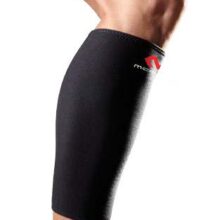
Login For Health Care Pricing
Typically Ships in 3-5 Business Days
Le manchon McDavid pour mollets offre une thérapie thermique/compression sans latex et un soutien des tissus mous.
Niveau 1 : Protection primaire - Réduction de la douleur associée aux élongations du mollet, au syndrome du tibia et aux varices ; aide à la récupération.

Login For Health Care Pricing
Out of Stock
Grâce à la fonction SkinLok™, à un coussinet de gel stratégiquement positionné et à son design discret, l'attelle tibiale de compression BioSkin vous procurera un soulagement inégalé de la douleur liée aux fentes tibiales, aux foulures et entorses du mollet et aux autres blessures de la partie inférieure de la jambe. Fabriquée aux Etats-Unis.
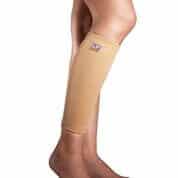
Login For Health Care Pricing
Out of Stock
This Shin Support from LP provides gentle shin compression to treat conditions like shin splints and supports injured calf muscles.